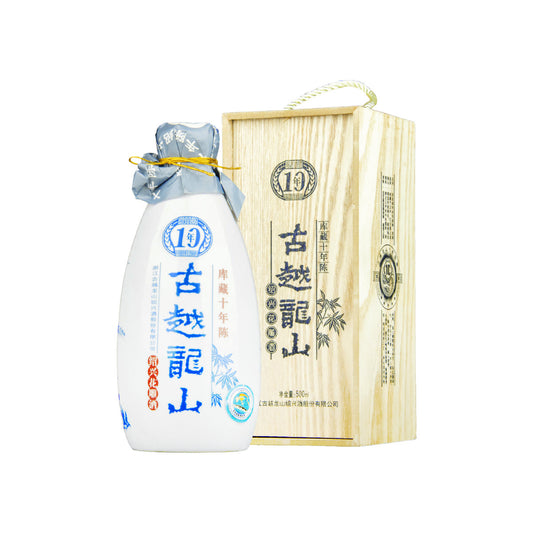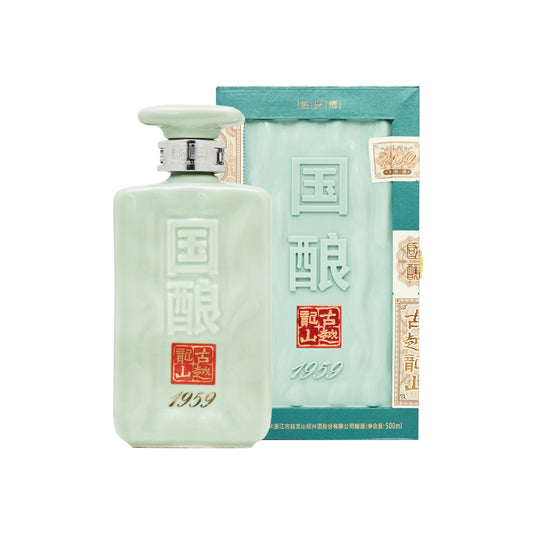
Japanese Sake vs. Chinese Shaoxing Wine, what are the differences?
Sake and Shaoxing Wine are both traditional alcoholic beverages made from rice through fermentation processes, boasting rich cultural histories. Let's delve into the distinctions between Chinese Shaoxing Wine and Japanese Sake.
1.Different Origins of Development
Shaoxing Wine, as one of world's three ancient wines (along with beer and grape wine), has been documented in historical records since the Shang and Zhou Dynasties, being a vital beverage in ceremonies and celebrations.
Around the 7th century AD, Chinese brewing techniques were introduced to Japan, laying the foundation for Sake's development. Brewers adapted to local conditions, gradually forming their unique brewing techniques and flavour profiles.
2.Different Production Processes
Shaoxing Wine's production process mainly involves four steps: steaming rice, making koji, fermentation, and aging. Making koji, especially, is crucial for Shaoxing Wine, distinguishing it from other alcoholic beverages.
Koji making involves mixing steamed glutinous or non-glutinous rice with koji mold, allowing it to ferment under suitable conditions to produce enzymes that convert starch and protein into sugars and amino acids.
Shaoxing Wine from different regions and brands may use varying types and proportions of koji mold, influencing its aroma, taste, and flavour. After koji making, the mixture is fermented in large jars or pots. Once fermentation is complete, the liquid part is filtered out, becoming Shaoxing Wine, which can be consumed directly or aged for improved quality.
On the other hand, Sake's production process mainly consists of five steps: rice washing, steaming, koji making, fermentation, and pressing. Koji making is crucial for Sake and is a significant factor in its distinction from other alcoholic beverages. After koji making, the mixture undergoes fermentation in large containers. Once fermentation is complete, the liquid part is filtered, pressed, and processed, becoming Sake, which can be consumed directly or aged.
3.Different Ingredient Selections
Shaoxing Wine and Sake also differ in ingredient selection. Shaoxing Wine primarily uses glutinous or non-glutinous rice, while Sake mainly uses japonica rice or Yamada Nishiki rice.
Glutinous rice has higher starch gelatinisation, resulting in a stickier and denser product compared to non-glutinous rice. Yamada Nishiki rice, being a premium variety of japonica rice, has high starch content and low protein content, making it suitable for Sake production. Different rice varieties affect the aroma, taste, and flavour of Shaoxing Wine and Sake.
Apart from rice, Shaoxing Wine and Sake also use different types and proportions of koji mold (or white mold) and yeast. Koji mold (or white mold) is a fungus that produces enzymes to convert starch into sugar. Different types and proportions of koji mold (or white mold) affect the aroma, taste, and flavour of Shaoxing Wine and Sake. For example, Shaoxing Wine in southern China often uses Daqu, which produces more proteases, increasing the amino acid content, aroma, sweetness, and richness of Shaoxing Wine. In contrast, Sake in Japan often uses white koji, which produces more amylases, increasing the ethanol content, dryness, and clarity of Sake. Yeast is a bacterium that converts sugar into ethanol and carbon dioxide. Different types and proportions of yeast affect the aroma, taste, and flavour of Shaoxing Wine and Sake. For example, China often uses wild or cultivated yeast to make Shaoxing Wine, producing a variety of aromatic substances, resulting in a rich and complex aroma. In contrast, Japan often uses specially cultivated yeast for Sake production, producing higher ethanol content and lower impurity content, resulting in higher purity and clarity of Sake.
4.Different Brewing Conditions
Shaoxing Wine and Sake also differ in brewing conditions. Shaoxing Wine's brewing conditions mainly depend on the region and season, while Sake's brewing conditions mainly depend on technology and equipment.
Shaoxing Wine's brewing conditions typically occur in natural environments, influenced by factors such as temperature, humidity, air pressure, and microorganisms. Different regions and seasons produce Shaoxing Wine with different characteristics and styles. For example, southern China often uses low-temperature and low-humidity conditions in winter to make Shaoxing Wine, slowing down fermentation to give it a higher refreshing taste and aroma.
Sake's brewing conditions usually occur under controlled conditions, influenced by factors such as temperature, humidity, oxygen, and carbon dioxide. Different technologies and equipment produce Sake with different qualities and grades. For example, Japan often uses low-temperature and low-humidity conditions in winter to make Sake, increasing starch conversion and ethanol purity, resulting in higher dryness and clarity of Sake. However, Japan also has a tradition of making Sake in high-temperature and high-humidity conditions in summer, increasing aromatic substances and impurity content, resulting in a higher aroma and flavour of Sake.
5.Different Characteristics of Finished Products
Shaoxing Wine and Sake also differ in the characteristics of their finished products. Shaoxing Wine's characteristics mainly manifest in colour, aroma, taste, and after-taste, while Sake's characteristics mainly manifest in colour, aroma and clarity in taste.
Shaoxing Wine's colour is typically yellow or amber, sometimes appearing red or a even darker tone, while Sake is usually colourless or light yellow, sometimes appearing slightly pink or green.
Shaoxing Wine's aroma is usually complex and rich, for example rice, koji, floral, fruit, grassy, wood, and among others, while Sake's aroma is typically simple and pure, including rice, floral and fruit.
Shaoxing Wine's taste is usually sweet and rich, sometimes with slight bitterness or spiciness, while Sake's taste is typically dry and refreshing, sometimes with slight sweetness or acidity. Shaoxing Wine's flavour is usually diverse, influenced by ingredients, koji mold, fermentation, and aging, while Sake's purity is typically more consistent, resulted by factors such as ingredients, white mold, fermentation, and pressing.





